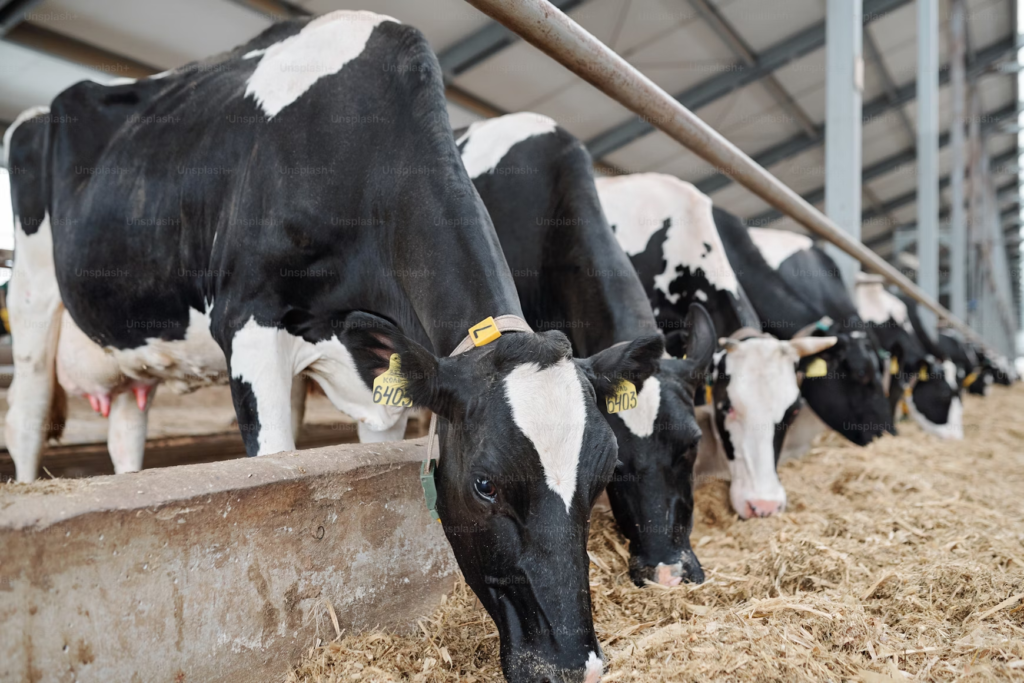H5N1 positive dairy cattle herds
H5N1 cases in humans (U.S.)
commercial birds killed
Recent Posts:
Fatal H5N1 Cases in Children and Risks to the Food Chain
In recent and unfortunate bird flu news, We have reports of two fatal H5N1 cases in children. The first, a three year...
Read MoreMexico Reports First Human H5N1 Case
On Friday, April 4, 2025, Mexico reported the country’s first human case of H5N1 bird flu. The details about the first human...
Read MoreH5N1 human case in Ohio infected with genotype D1.3
The CDC recently issued a Bird Flu Response Update (March 19, 2025). It provides more details on the recent human H5N1 case...
Read MoreNo human transmission from child infected with H5N1 bird flu
In its recent bird flu update, the CDC reported results of serology testing from the close contacts of a recent H5N1 case...
Read MoreA Timeline of H5N1 infections in Cats
Recently, there have been more reports of cats dying from H5N1 bird flu after eating contaminated pet food or otherwise exposed to...
Read MorePB2 E627K mutation found in dairy cows infected with H5N1: why it matters
You may have read some recent news articles about a “concerning new mutation” noted in some infected dairy cattle herds recently reported. Sequence...
Read MoreH5N1 genotype D1.1 in dairy cattle reported in Arizona
We now have a second report of dairy cattle infected with H5N1 genotype D1.1, the bird flu strain circulating in wild birds....
Read MoreNew Human H5N1 bird flu cases: Nevada, Ohio, Wyoming
This last week was busy with new human H5N1 bird flu cases in 3 states. We have the first reported case in...
Read MoreNevada dairy cattle infected with different H5N1 bird flu strain
The USDA has confirmed that Nevada dairy cattle herds have been infected with H5N1 genotype D1.1, the strain circulating in birds, as...
Read MoreNew H5N1 Human Case in the U.K. from exposure to birds
We have another human H5N1 case in the U.K., where a person was infected with the virus directly from birds. On January...
Read MoreNew H5N9 reassortant virus found in California duck farm
In recent bird flu news, we have a report of a new H5N9 virus detected in a commercial duck farm in Merced...
Read MoreCat deaths from H5N1 positive raw pet food prompt new FDA rules
Recently, a number of domestic cats have died from H5N1, some after consuming raw milk and others after consuming raw pet food...
Read MoreThe First Fatal Case of H5N1 Bird Flu in the U.S.
A person in Louisiana who had been hospitalized for bird flu has died, reported the Louisiana Department of Health on Monday, January...
Read MoreAs H5N1 continues to cause mortality in wild birds, are we closer to a flu pandemic?
“The Illinois Department of Natural Resources would like to remind the public to report any large mortality events of waterfowl and other...
Read MoreNew Human Cases of H5N1 Bird Flu in the United States
In the past week, there have been several developments with regard to H5N1 and human health. We now have a severe case...
Read MoreCurrent Status of Reported Bird Flu Infections:
H5N1 Outbreaks in U.S. Dairy Cattle (1,020+)
Per the USDA, we are now at 1,020 dairy cattle herds with confirmed H5N1 infections across 17 states.
This updated count reflects new detections in Idaho, California, Arizona, and Nevada. It was only last week that the U.S. surpassed 1,000 infections.
California remains the state with the most infections to date, now with 763 herds.
In Nevada, cattle were reported infected with genotype D1.1 in December 2024 and January 2025. This marked the first time that an H5N1 strain other than the B3.13 genotype infected cattle. In February 2025, genotype D1.1 was reported in Arizona dairy cattle.
Other livestock infected with H5N1 include two pigs on a backyard farm in Oregon and an Alpaca in Idaho. The pigs were infected with genotype D1.2.
These are just confirmed infections. The total is certainly higher. USDA stated as much in its 12/6/24 announcement of mandatory testing of raw milk samples, noting that this will “help swiftly identify which states, and specific herds within them, are affected with H5N1.”
CDC H5N1 Human Case List (70+)
CDC lists 70 human H5N1 cases in the official count.
Ohio reported a human case on 2/12/2025 in a poultry farmer who had respiratory symptoms, was hospitalized, and recovered. The Ohio H5N1 case is genotype D1.3.
Wyoming reported a human case on 2/14/2025, in a woman who was hospitalized, likely exposed to a backyard flock.
Nevada reported a human H5N1 case in a dairy farm worker who experienced conjunctivitis.
The last case count included a child in San Francisco, California. According to the local public health alert, the child “experienced symptoms of fever and conjunctivitis but did not need to be hospitalized and has since fully recovered.” The source of exposure is unknown.
*The California case is the third confirmed human case with an unknown source of infection.
The first human H5N1 fatality was reported on 1/6/2024 in Louisiana, in a patient who had been hospitalized. On 12/18/24 the CDC announced that this was the first severe case in a human in the U.S.
*CDC’s count is an understatement. Not included in the official case count is a “presumptive positive” human H5N1 case reported in Wisconsin on 12/18/24. Also not included are 2 human H5N1 cases from Arizona reported on 12/6/24. Both were exposed at a commercial poultry farm and reported mild symptoms. These are identified as “probable” human cases.
There are so many “probable” cases that the CDC created a separate list for them, which totals 7 cases. This includes a case reported in Delaware in an adult who “developed respiratory symptoms” and sought healthcare. Testing was positive for H5 at the state lab, but was negative for H5 virus upon PCR test at the CDC, and thus cannot be officially confirmed. There was no known exposure to poultry, cows, or raw dairy.
Nor does the CDC count include the 8 mild or asymptomatic cases discovered by serological testing in Michigan, nor the close contact of the Missouri case who tested positive.
Hot Topics & Recent Developments:

In 2022, a poultry worker was the first H5N1 human case in the U.S. Since April 2024, there have been at least 70 cases, with 1 fatality. These are (mostly) in people exposed to cattle or poultry, with most getting mild symptoms. The fact that H5N1 clade 2.3.4.4b viruses can infect humans directly from mammals is itself concerning and signals an evolution of this virus. Read my articles on the ongoing scientific research for key insights into how H5N1 impacts human and animal health and the risk is for the public.

The ongoing outbreaks of H5N1 clade 2.3.4.4b in U.S. dairy cattle herds grows more widespread every day. So far 17 states have reported infected herds. Studies done to date suggest the virus replicates at high levels in the mammary gland of cows and that the respiratory route is not the primary mode of transmission between herds (although it’s possible). Read more to learn about what is being done to ensure the safety of the milk supply and what happens to the cows infected with bird flu.

H5N1 clade 2.3.4.4b viruses have caused a substantial number of outbreaks in more mammals than ever, leading to massive mortality in sea mammal groups like seals and sea lions. H5N1 has infected hundreds of terrestrial mammals, typically leading to severe symptoms and death. Read my articles to learn more about the devastating impact these outbreaks have had and what scientists have learned about the virus as it continues to infect and spread through new hosts.
















